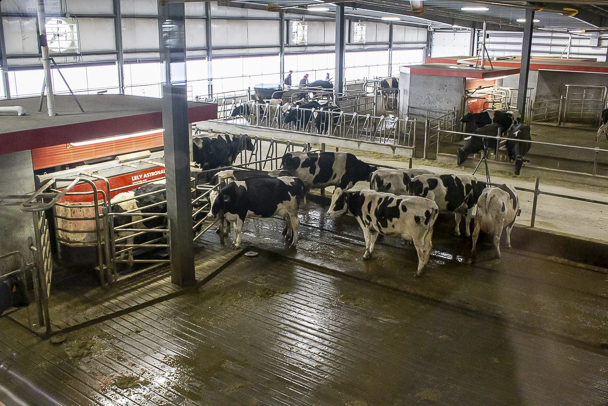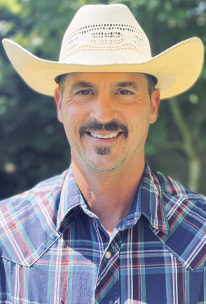“How do I get started?” and “What color?” are by far the two most frequently asked questions we get from producers interested in automated milking systems. While we do not endorse a specific color of robot, we can give advice on how to get started.
Start your automation journey by visiting multiple dairies. Do not be afraid to ask other producers what is one thing they would have done differently. No barn is perfect and understanding common issues can benefit your startup and barn design. Also, begin considering your current management practices like scraping and pushing up feed and whether to automate those tasks too.
This may seem like a lot. Remember, transitioning to automated milking is a journey and forward planning is your friend. To help guide you, we answered popular producer-asked questions and created a 12-month checklist for startup.
1. How much will this cost me?
The answer depends on a farm’s unique factors like breed, previous management practices, previous herd production levels, guided-flow versus free-flow cow traffic system and ranging feed cost. For example: If the transition to robots includes changing from 2X-milking to 3X-milking, those herds may expect an 8% to 10% increase in pounds of milk, while herds continuing 3X-milking may not gain as high of a production increase.
Producers transitioning from conventional to robotic milking can expect a 30- to 60-cent per cow per day increase in feed cost, based on the current markets. However, the potential for increased milk production leads most producers to see a return on their investment.
2. Free-flow versus guided-flow: How would my feed cost change?
A guided-flow system adds less to feed cost than a free-flow system. This is because a free-flow system requires more energy per quantity of feed fed in the robot to attract each cow to be freely milked, while a guided-flow system (mostly used as a milk-first system) uses a gate system to separate the cows from feed and requires a milking through the robot to access the partial mixed ration (PMR). In this sense, a producer does not need to feed as much pellet because the feedbunk acts as part of the reward.
On average, a guided-flow system requires 6 pounds per cow (plus or minus 3 pounds), and a free-flow system requires 12 pounds per cow (plus or minus 3 pounds). Although feeding rates on average double between the two systems, this does not correlate to the cost doubling. Based on the system, the PMR will either add or subtract nutrients per the pellet amount to form a balanced diet. It is fair to assume that a free-flow system will entail higher feed costs, but this normally amounts to a few cents. These few cents accrue from a supplier or feed mill versus the opportunity to use homegrown corn in the PMR.
3. How do I manage hoof health?
Managing hoof health requires extra attention on an automated milking dairy because cows are no longer herded to the parlor where they normally make their way through a footbath. In this situation, lame cows of varying degrees often will choose to not use the robot and thus forgo the footbath – increasing a dairy’s digital dermatitis (DD) and number of fetch cows. Footbath placement is not recommended at the robot exit as it may deter the cows from visiting – it is often an extra management practice conducted two to three times a week.
Managing hoof health can start as soon as the decision to transition is made. A plan may include a trimming and treatment schedule from now until startup that prepares cows for the new or upgraded facility. Also, assess how hoof health may be executed after startup and include plans in your design. Lastly, schedule all cows a hoof trimming at least two to three months before startup, and begin a footbath protocol, or review your current protocol’s results, for treating digital dermatitis.
4. What things can I ‘eliminate as new’ to the cow?
Ask yourself this question one month prior to startup. The facility is nearing completion, and the lactating herd will soon be moving into their new home. Eliminating the number of “new things” to your cows, such as diet changes, shiny objects and even new barn smell, can lessen stressors on move in day. Preparing the barn may involve removing construction materials and sweeping the floors for nails. Other considerations like running a cement block to wear out sharp floor edges and housing far-off cows or heifers in the barn to break it in can get rid of the new barn smell and wear in shiny objects.
If possible, allow cows to access their new barn and PMR ration, as well as eat pellets through the robot two weeks before startup. If that is not an option – at the very least one week prior to startup – begin feeding your PMR ration and top-dressing twice daily about 2 pounds of pellet. Major benefits come with applying these strategies such as reducing initial fetching. These strategies may cause a slight drop in milk, but early access to the robot and/or the new diet will benefit the cows, startup milk results and you in the long run.
5. How do I successfully manage the first weeks?
Too many articles forget to mention that everything you have accomplished up until startup can be negatively affected by mishandling your cows during the first days of operation. The first one to three experiences a cow has in an automated milking system must be pleasant. An unpleasant experience can lengthen the training period and may mean the difference of not fetching to fetching them for a week or more. Tips to achieve less stress during and after startup include a proper gate system and making sure all groups of cows have access to the resting area, feed and water.
When managing your people, be conscious about the number of people and their shifts. An effective team involves one person for mapping the cows on the computer for the automated milking system, one person per robot for fetching and a relief person. Switching out teams every eight hours is recommended to avoid burnout and mishandling. Do not hesitate to seek help from your consultants and ask them to commit time. (A tip for consultants: Bring food for the farm team.)
Move-in checklist for transitioning to robotic milking
A more detailed and printable version can be found online.
12 to six months before startup
- Schedule meetings with on-farm management team and advisers (veterinarians, nutritionists, breeder, accountant) to understand goals and expectations.
- Review current reproduction status, days in milk (DIM) and projected calving to ensure goals and targets are attainable after startup.
- Create a hoof trimming and treatment schedule from now until startup.
Six to three months before startup
- Perform a herd evaluation and identify unfit cows. Consider teat placement, udder composite, and feet and legs.
- Schedule hoof trimming for all cows at two to three months, and begin a footbath protocol or review your current protocol’s results.
- Take a bulk tank somatic cell count (SCC) culture to identify any pathogens. Identify cows over 250,000 SCC and take individual culture tests.
One month before startup
- Remove construction materials from barns and sweep floors for nails. Consider running a cement block to wear out sharp floor edges and housing cows or heifers to break barn in.
- Prepare cows by attaching collars and activity tags, as well as clipping udder hair and tail switches.
- Dry off or cull “unfit” cows. Consider drying off cows less than 90 days from calving to reduce cow numbers at startup.
- Solidify a feeding plan with your nutritionist.
One week before startup
- Start feeding partial mixed ration (PMR) and top-dressing robot pellet twice per day at five to seven days before startup.
- Prepare team for startup.










